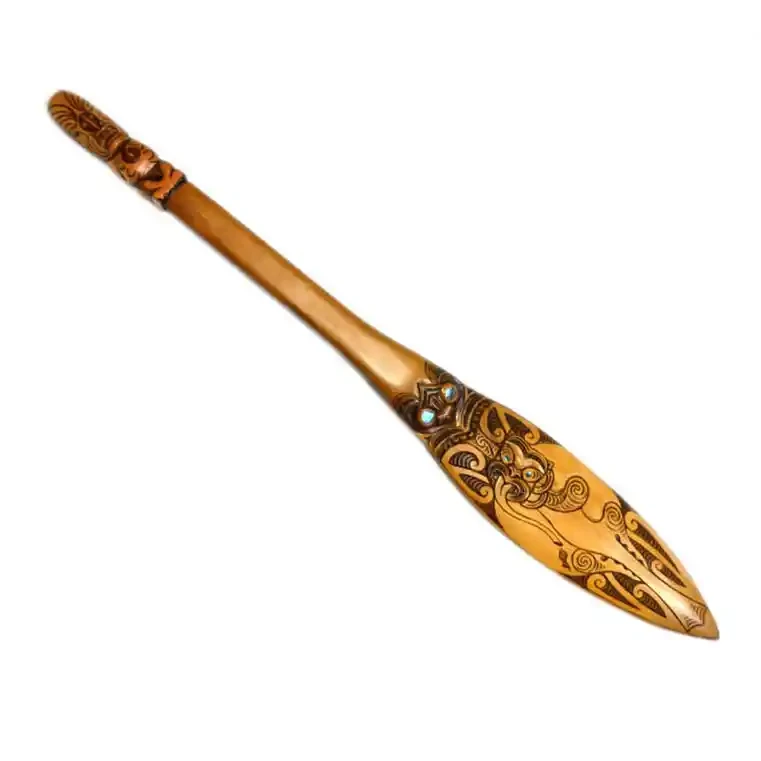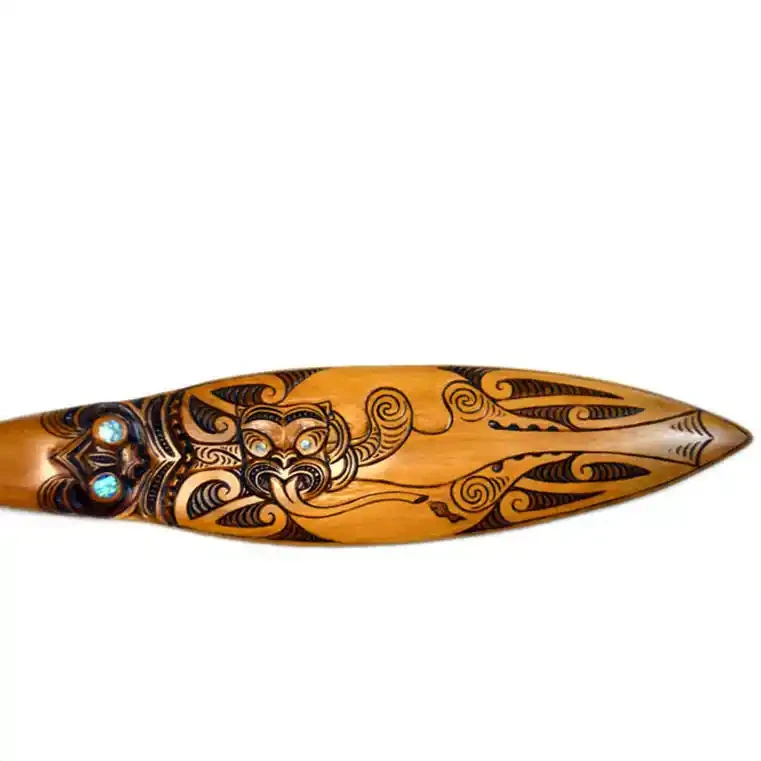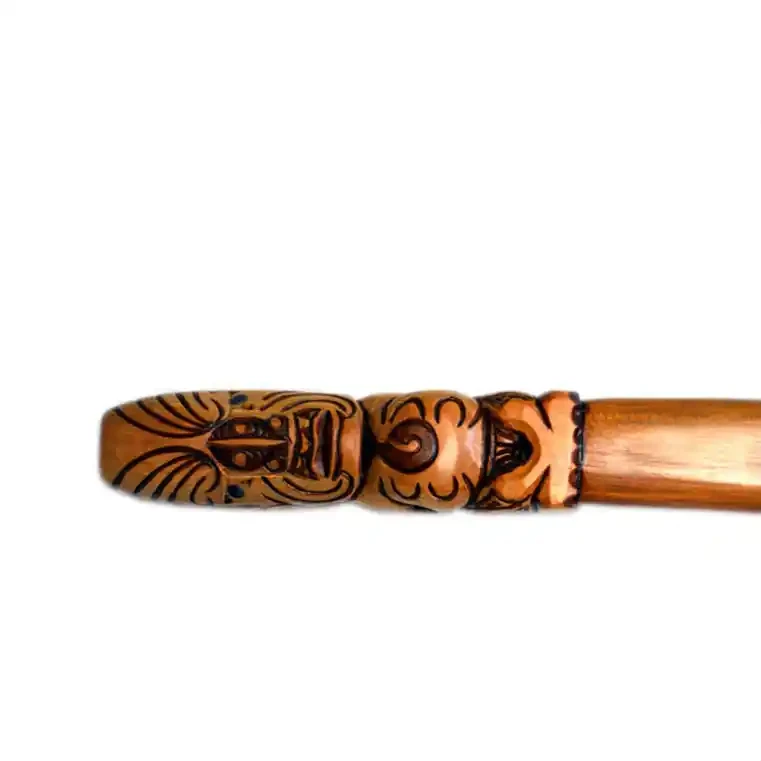


Large Māori waka hoe
Large Māori wooden paddle (waka hoe). Made to order. Authentic Māori art.
Beautiful wooden paddle with Maui, Tangaroa and depicting taniwha, the river guardian, on the blade.
Please note that there is quite a long waiting time (3-6 months).
Description:
Large Māori waka hoe
(Māori canoe paddles). Looking for authentic Māori art? You found another beautiful Māori artwork by our Māori wood carver. Popular corporate gift. Or make an impressive statement in your office.
Description large paddle:
‘Maui’ on top with Matau Hook representing prosperity and success, also safe travel especially over water.
Tangaroa ‘God of the oceans and fish' in center. Then depicting taniwha, the river guardian, on the blade. The taniwha is surrounded with Koru and Unaunahi (fishscale) patterns and represents growth, life, new beginnings, harmony and peace.
And the paddle itself represents strength, courage, determination, focus and energy.
Type of wood: NZ native timber. Our carver uses native NZ wood (rimu, matai, totara or swamp kauri). Beautiful large Māori paddle created by our talented Māori carver.
- Size: large Māori waka hoe: ~ 980mm (38.58")
Authentic Māori artefacts by our Māori artist.
Paddles
Paddling was the most common method of propelling canoes (waka). And these paddles (waka hoe) were known as a hoe or hīrau. Longer paddles were known as hoe whakatere, hoe whakahaere or urungi. The paddles were usually made of kahikatea wood, although mataī could also be suitably light and strong. Tuta Nihoniho, of the Ngāti Porou tribe, noted that paddles could also be made of mānuka, maire, the heart of pukatea, and tawa.The steering oars were straight, but on properly formed paddles the blade was set at a slight angle. The side of the blade used for pushing against the water was flat, while the other was rounded. The handle was straight, though in the Waikato district curved handles were used. Generally paddles were unadorned, but occasionally they were painted with scrolled kōwhaiwhai patterns. Paddles for purely ceremonial uses were usually carved.
On coastal trips one man would usually steer. However, on voyages in the open ocean there could be up to four – two at the stern, and two near the bow.
Source: Hoturoa Barclay-Kerr,
‘Waka – canoes – Waka equipment’
Te Ara – the Encyclopedia of New Zealand.
Or check out
We ship paddles worldwide. Please note that due to the value of these beautiful Māori artworks, the large wooden paddles need to be sent by International courier.
